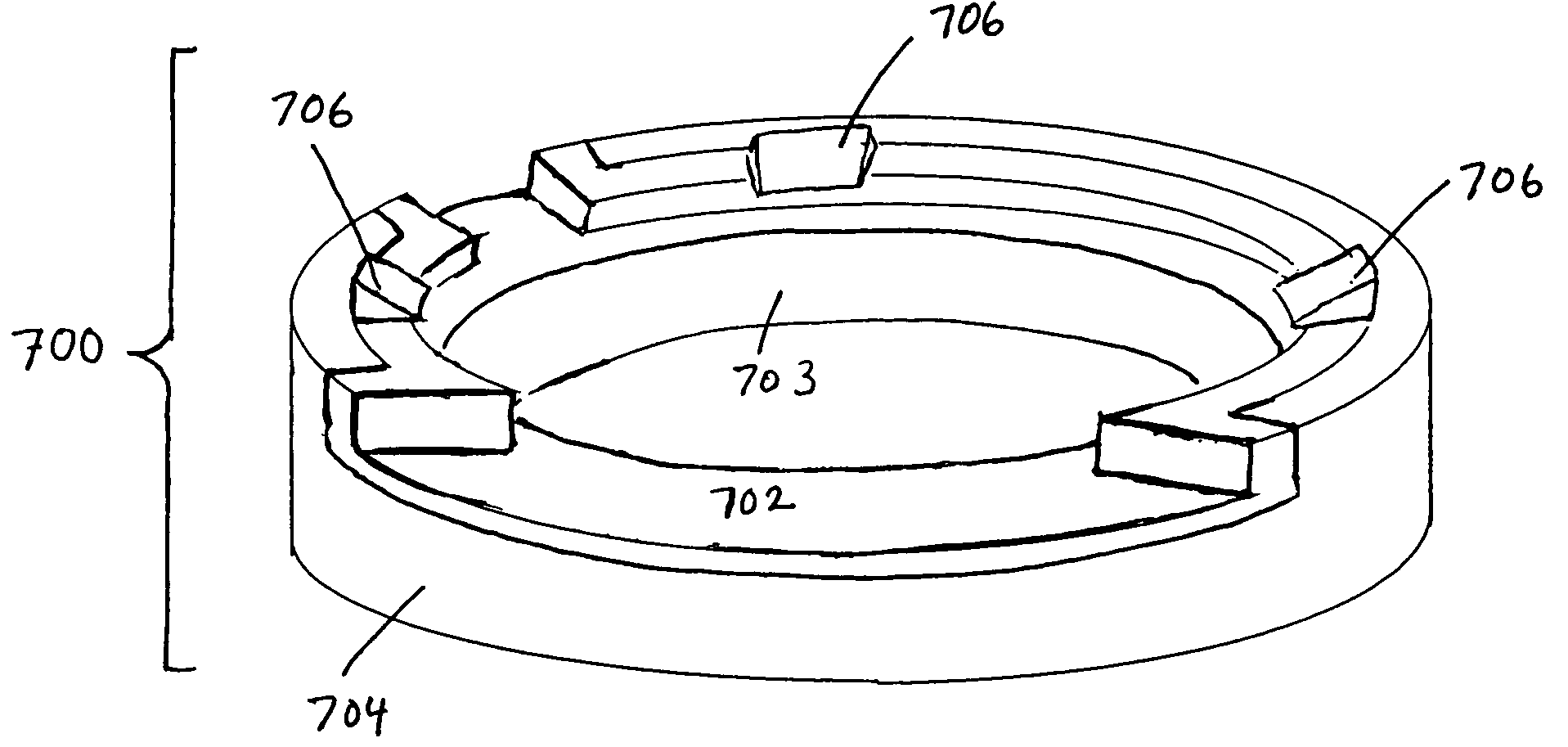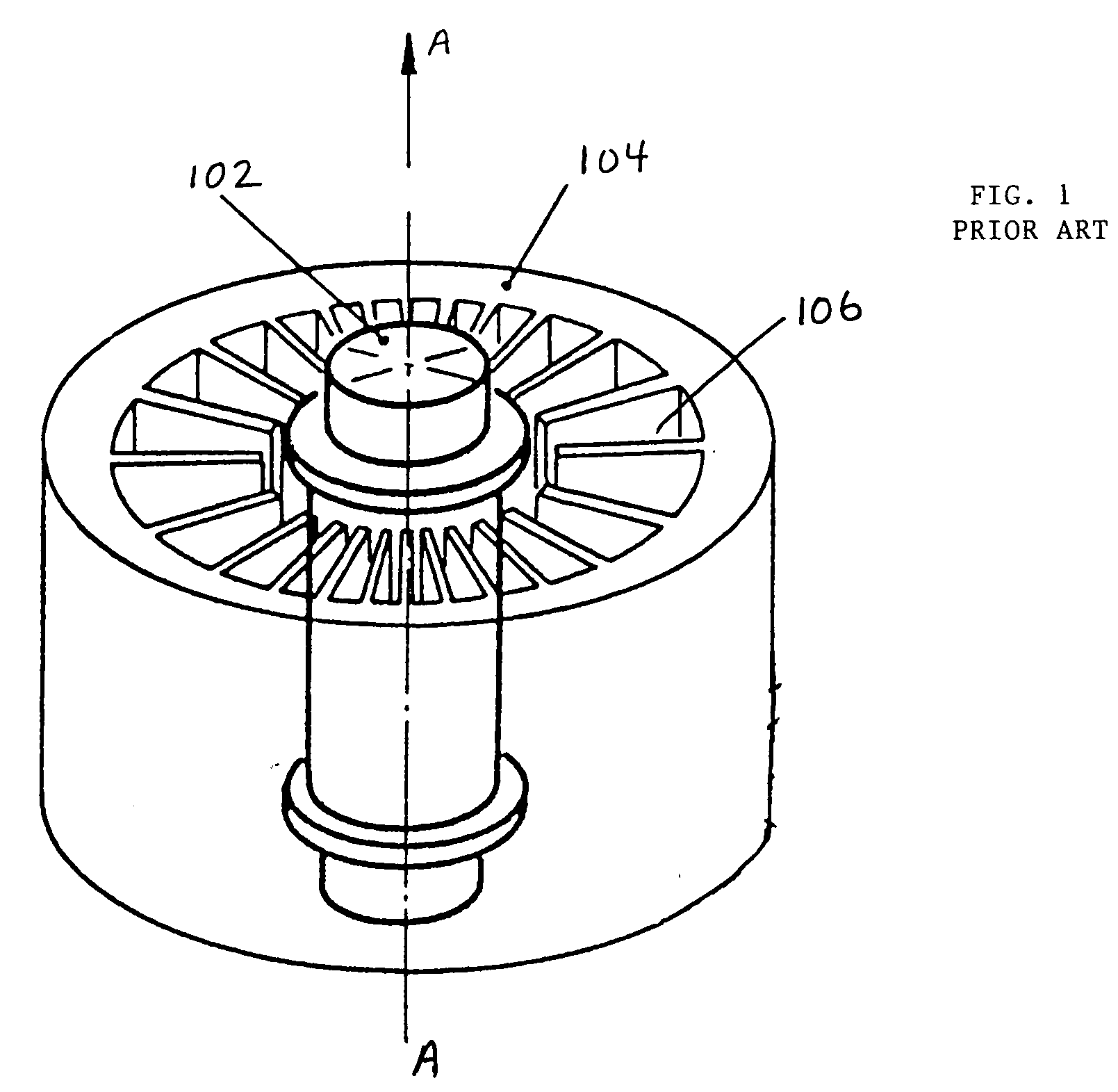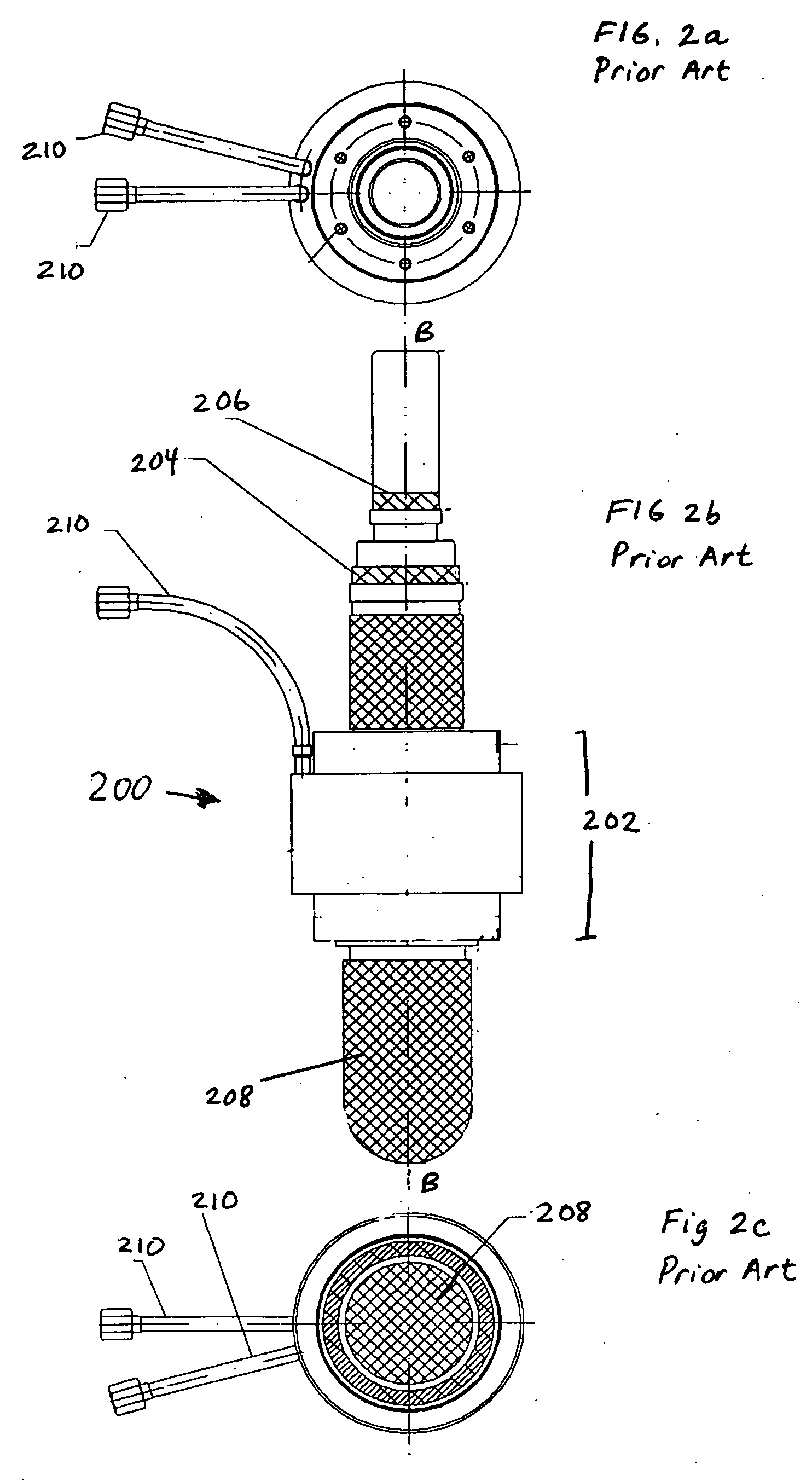Insulated RF suppressor for industrial magnetrons
a vacuum tube and suppressor technology, applied in the direction of transit tube leading-in arrangements, electrical/magnetic/electromagnetic heating, electrical apparatus, etc., can solve the problems of complex relationship between magnetic field strength, cathode bias voltage, filament current, and the geometry of the magnetron needed to establish a stable operating point of a specified rf output power and frequency, and achieve safer and more reliable operation, reduce the effect of cathode bias voltag
- Summary
- Abstract
- Description
- Claims
- Application Information
AI Technical Summary
Benefits of technology
Problems solved by technology
Method used
Image
Examples
Embodiment Construction
[0045] A new type of RF suppressor is described herein. By fabricating the RF suppressor component from two functionally distinct materials, the performance of the RF suppressor, particularly with respect to its high-voltage tolerance, can be enhanced compared to that of RF suppressors made from only one type of material. The present invention is an insulated RF suppressor that incorporates an inner sleeve of highly electrically resistive material that can withstand the application of very high electric fields. The insulated RF suppressor component is fabricated as a bilayer composite of two parts: an insulating member shaped from a polymer material such as PTFE, and an RF-absorbing member comprised of a suspension of iron particles in an epoxy resin and shaped by using the insulating member as part of a form to mold the RF-absorbing material. The resulting RF-suppressor is then a single-piece comprised of an annular-shaped insulating polymer sleeve with a molded RF-absorbing shell ...
PUM
 Login to View More
Login to View More Abstract
Description
Claims
Application Information
 Login to View More
Login to View More - R&D
- Intellectual Property
- Life Sciences
- Materials
- Tech Scout
- Unparalleled Data Quality
- Higher Quality Content
- 60% Fewer Hallucinations
Browse by: Latest US Patents, China's latest patents, Technical Efficacy Thesaurus, Application Domain, Technology Topic, Popular Technical Reports.
© 2025 PatSnap. All rights reserved.Legal|Privacy policy|Modern Slavery Act Transparency Statement|Sitemap|About US| Contact US: help@patsnap.com



